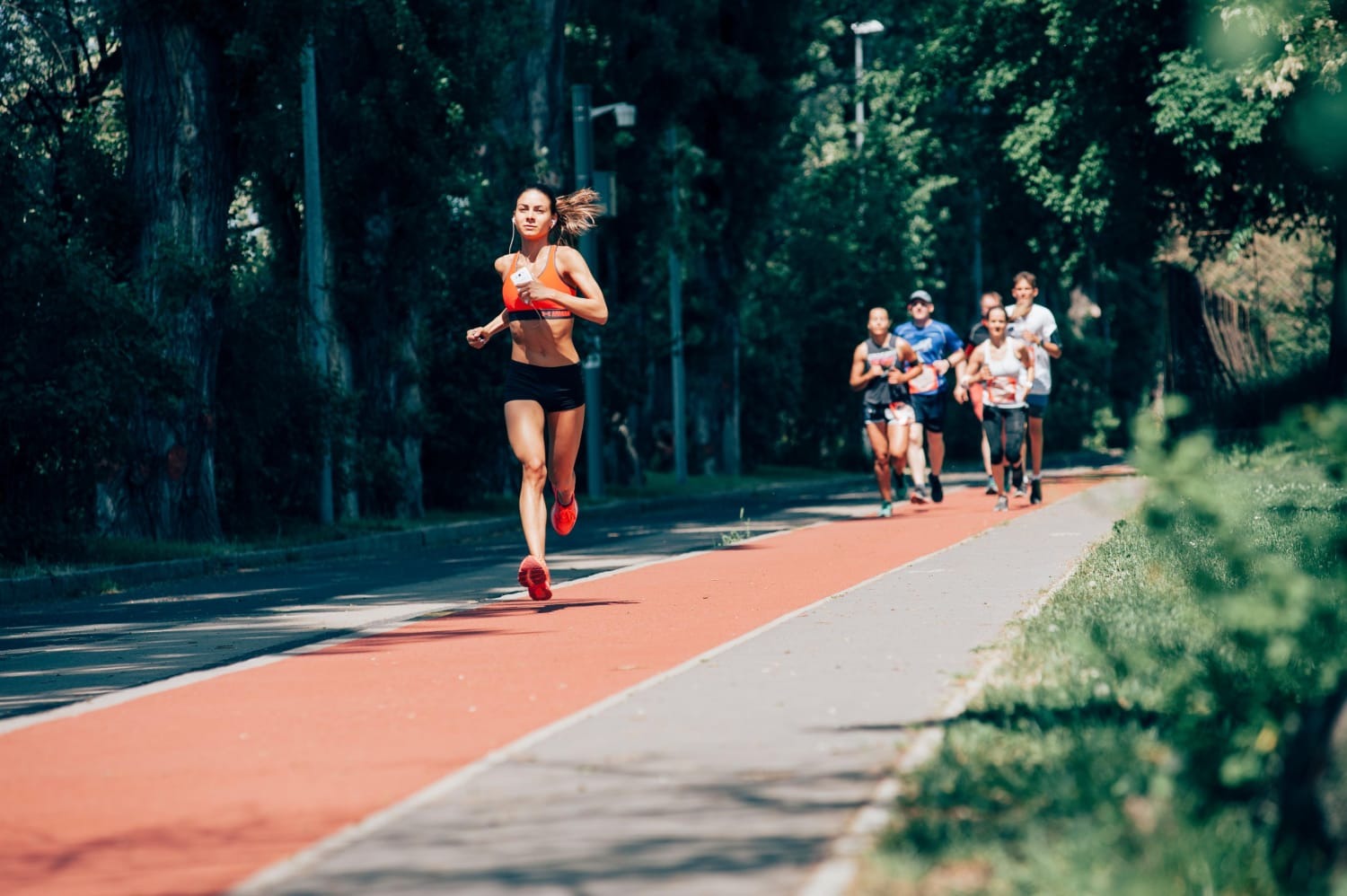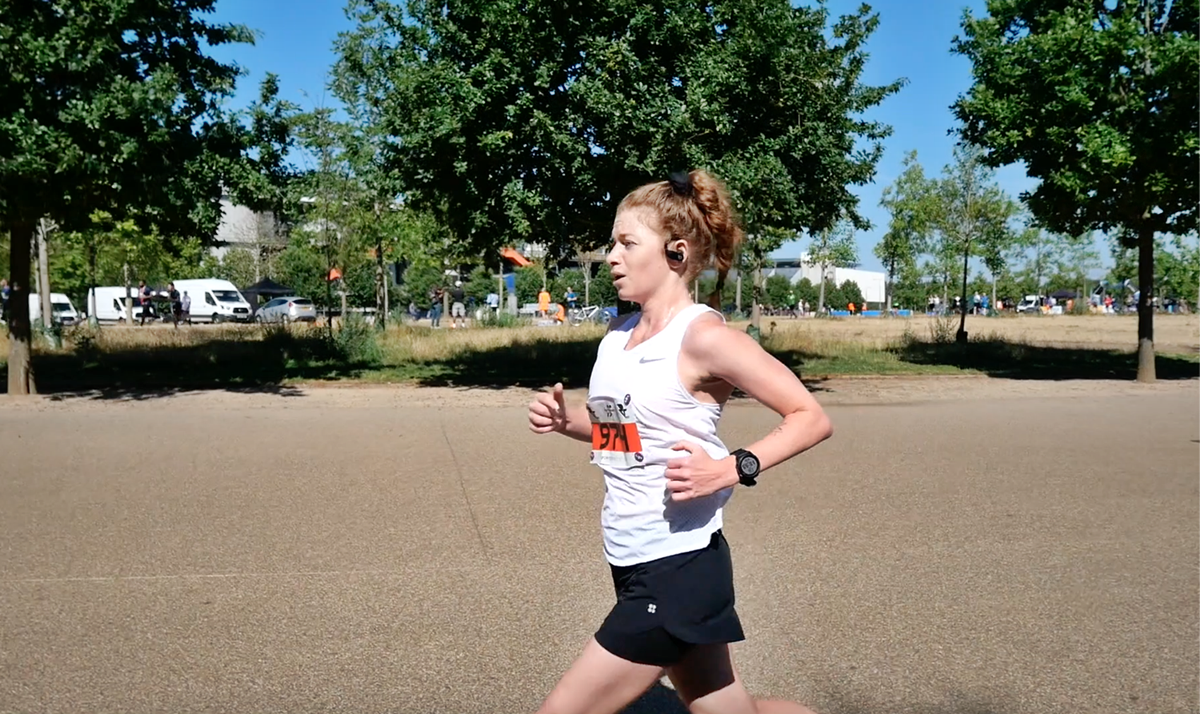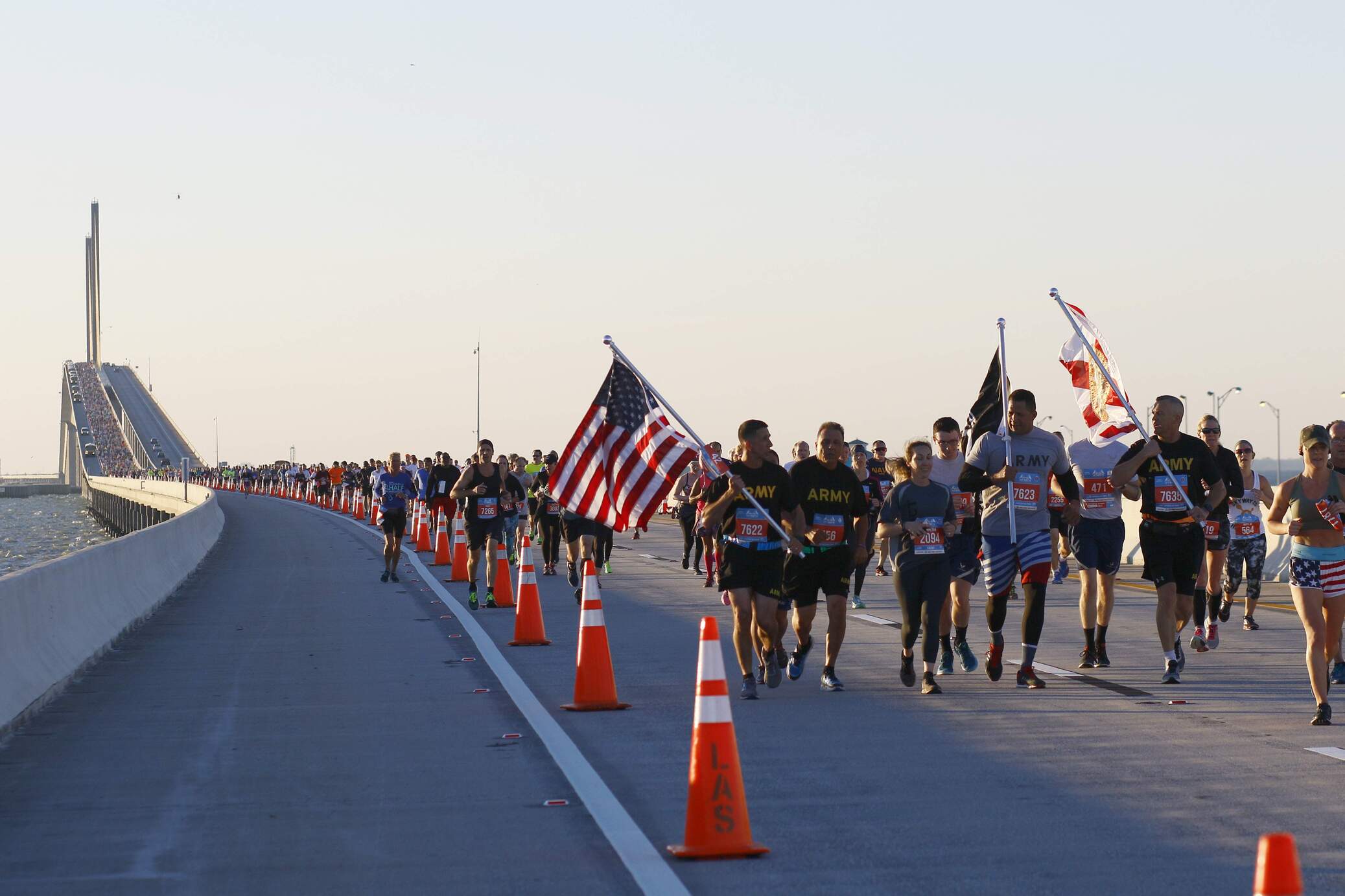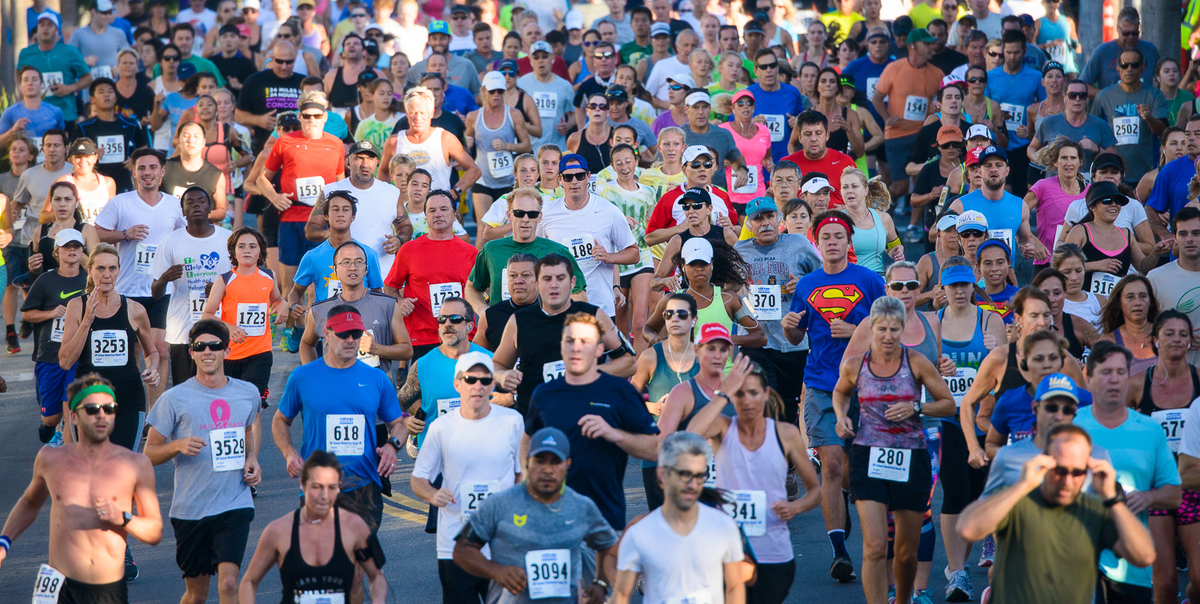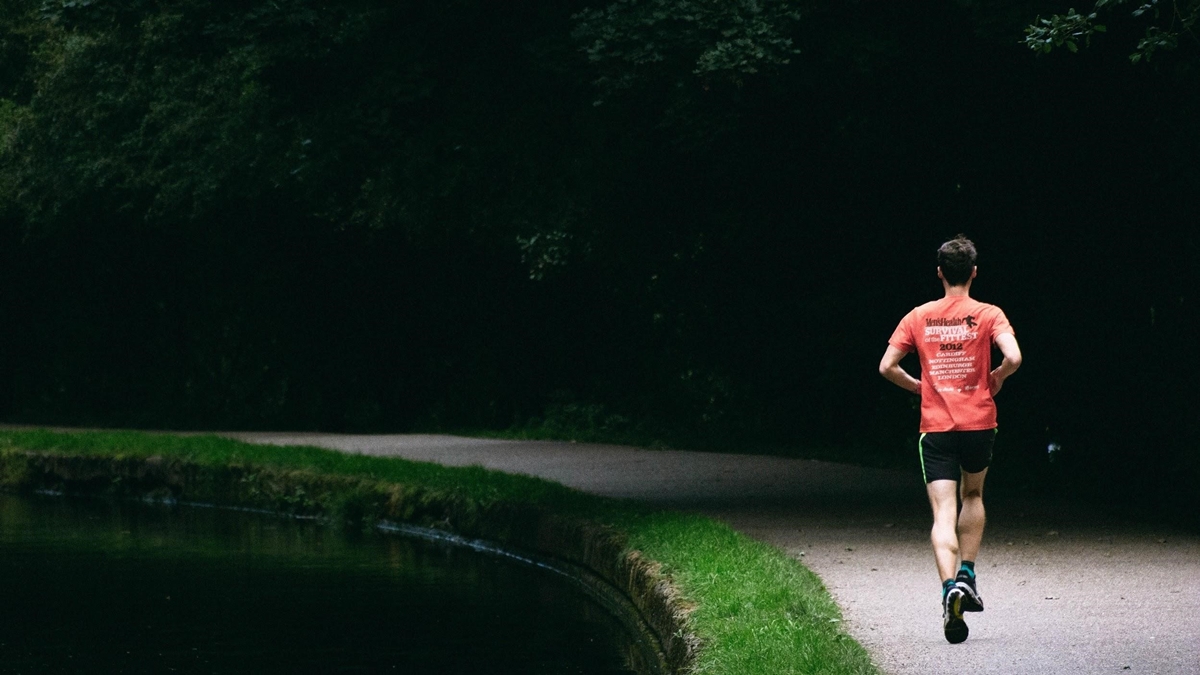

Featured
How Long Does It Take To Do A 10K Run
Modified: August 21, 2023
Discover how long it takes to complete a 10K run with our featured guide, packed with tips and insights for runners of all abilities.
Introduction
Welcome to the exciting world of 10K running! Whether you’re a seasoned runner looking for a new challenge or a beginner taking your first steps in the running world, the 10K run is a popular and accessible distance that attracts participants of all fitness levels. But you may be wondering, how long does it take to do a 10K run?
A 10K run, also known as a 10-kilometer run, covers a distance of 10 kilometers or approximately 6.2 miles. It’s a great way to push your limits, boost your endurance, and experience the thrill of a race. As you embark on your 10K journey, it’s important to understand that the time it takes to complete a 10K run can vary widely from person to person.
The time taken to complete a 10K run depends on various factors such as your fitness level, training program, terrain, weather conditions, and personal goals. Some runners may be able to finish a 10K run in under 40 minutes, while others may take over an hour. Regardless of your current running ability, the key is to set realistic goals and work towards improving your time.
In this article, we will explore the different factors that can affect your 10K run time, provide an average benchmark for completing a 10K run, and offer some valuable tips to help you improve your performance.
So, lace up your running shoes, get ready to hit the pavement, and let’s dive into the fascinating world of the 10K run!
Understanding the 10K Run
The 10K run is a popular distance in the running community that offers a challenging yet achievable goal for runners of all levels. Understanding the nuances of this distance can help you prepare better and make the most out of your training.
As mentioned earlier, a 10K run covers a distance of 10 kilometers or approximately 6.2 miles. It is often chosen as a stepping stone for beginner runners who are looking to progress from shorter races, such as 5Ks, to more longer distances like half marathons and marathons.
One of the advantages of the 10K distance is its flexibility. Whether you prefer running on roads, trails, or even on a treadmill, you can easily adapt your training environment to suit your preferences and availability.
In addition, the 10K run allows you to challenge yourself without committing to an overly rigorous training schedule. While it still requires sufficient training and preparation, it is generally more manageable and less time-consuming compared to longer distances.
Participating in a 10K run can also be a great way to set fitness goals and track your progress. Whether you’re aiming to beat a personal best or simply complete the distance comfortably, the journey to a 10K run can be immensely satisfying and rewarding.
Moreover, 10K runs are often organized as part of charity events, community gatherings, or organized races, providing a fun and inclusive atmosphere. The energy and camaraderie among participants make the experience even more enjoyable and memorable.
Understanding the 10K run also involves familiarizing yourself with different aspects of race logistics. This includes knowing about pacing strategies, hydration and fueling techniques, warm-up exercises, and proper running gear.
By acquiring this knowledge, you will be better equipped to tackle the challenges that come with a 10K run and ensure a successful and enjoyable race day experience.
Training for a 10K Run
Training for a 10K run requires a structured approach that gradually builds your endurance, speed, and overall fitness. Whether you’re a beginner or an experienced runner, following a training plan designed specifically for a 10K can help you achieve your goals and avoid injury.
Before starting your training, it’s important to assess your current fitness level and set realistic goals. This will help you determine the appropriate training intensity and duration. If you’re new to running, consider incorporating a run/walk strategy where you alternate between running and walking intervals.
A typical 10K training plan includes a mix of running workouts, cross-training activities, rest days, and strength training exercises. The running workouts will consist of various types of runs, such as long runs, tempo runs, speed workouts, and recovery runs.
Long runs are essential for building endurance and getting your body accustomed to running for longer distances. Gradually increase the distance of your long runs over time to prepare yourself for the full 10K distance.
Tempo runs and speed workouts are designed to improve your speed and running economy. These runs involve running at a faster pace than your usual training pace for a specified distance or time. Incorporating interval training, where you alternate between high-intensity bursts and recovery periods, can also help improve your speed and fitness.
Don’t forget to include rest days in your training plan. Giving your body time to recover is essential in preventing overuse injuries and allowing your muscles to adapt and grow stronger. Use rest days for stretching, foam rolling, and low-impact activities like yoga or swimming.
Strength training exercises are often overlooked by runners, but they play a crucial role in injury prevention and improving performance. Incorporate exercises that target your core, legs, and upper body to build overall strength and stability. Include exercises like squats, lunges, planks, and push-ups into your routine.
As you progress through your training, be mindful of your body’s signals. Increase the intensity and duration of your runs gradually to avoid overtraining and injury. Listen to your body and adjust your training plan if needed.
Finally, remember to stay consistent with your training and be patient with your progress. Rome wasn’t built in a day, and neither is your running endurance or speed. Trust the process, focus on your training plan, and enjoy the journey towards completing your 10K run.
Setting a Goal Time for a 10K Run
Setting a goal time for a 10K run can help provide motivation and focus during your training. It gives you something specific to work towards and allows you to track your progress. However, it’s important to set a realistic and achievable goal based on your current abilities and training level.
When setting a goal time for a 10K run, take into consideration factors such as your previous race performances, your current fitness level, and the specific course conditions of the upcoming race. It’s also helpful to consult with a running coach or experienced runner who can provide guidance and advice based on their expertise.
If you’re a beginner runner or new to the 10K distance, a good starting point is to aim for a comfortable and enjoyable run. Completing the distance and enjoying the experience can be a worthy goal in itself. As you gain more experience and confidence, you can then start setting more specific time goals.
For more seasoned runners, setting a goal time may involve analyzing your training data and race times from previous races. Look at your average pace and performance in shorter distances, such as the 5K, to estimate a realistic goal time for the 10K. Consider factors like your endurance, speed, and ability to maintain a consistent pace over the distance.
Keep in mind that goals can be subjective and personal. Some runners may aim to achieve a specific time, while others may focus on improving their performance compared to their last race. Both approaches are valid and can bring a sense of accomplishment.
Another key aspect of setting a goal time is to create a plan and a strategy for achieving it. Break down your goal time into smaller milestones and focus on improving each aspect of your training, such as increasing mileage, incorporating speed workouts, or improving your race pace.
It’s important to be flexible and adaptable with your goals as well. Factors such as injuries, unexpected life events, or changes in training conditions can affect your performance. Embrace a growth mindset, learn from setbacks, and adjust your plan accordingly to keep moving forward.
Ultimately, setting a goal time for a 10K run is a personal decision. It’s all about challenging yourself, pushing your limits, and enjoying the journey. Whether you’re aiming for a personal best or simply looking to complete the distance, embrace the process and celebrate every step towards achieving your goal.
Factors Affecting Time to Complete a 10K Run
The time it takes to complete a 10K run can vary from person to person and is influenced by a range of factors. Understanding these factors can help you better gauge your performance and set realistic expectations for your race.
One of the primary factors that affect your 10K run time is your fitness level. If you have a solid aerobic base and regularly engage in running or other cardiovascular activities, you may have a better endurance capacity, allowing you to maintain a faster pace for a longer duration.
Training plays a significant role in determining your 10K run time. The consistency, duration, and intensity of your training sessions directly impact your fitness level and running performance. If you follow a structured training plan that includes speed workouts, intervals, and progressively longer runs, you’re likely to see improvements in your time.
The terrain of the racecourse also affects your performance. Running on flat terrain, such as a road, typically allows for faster speeds compared to running on uphill or hilly routes. Consider the elevation and course profile when setting your time goals.
Weather conditions can significantly impact your 10K run time. Running in hot and humid weather can be more challenging and may slow down your pace. Similarly, strong winds or heavy rain can also affect your performance. Keep an eye on the weather forecast and adapt your strategy accordingly.
Your mental state and mindset during a race can also influence your time. Maintaining a positive attitude, staying focused, and having a strategy in place can help you push through the inevitable moments of fatigue and keep a steady pace.
Other factors like your age, genetics, and body composition can also play a role in determining your 10K run time. Age-related changes in muscle mass and cardiovascular capacity may result in slower times for some individuals. Likewise, factors like stride length and efficiency, as influenced by genetics and body composition, can impact your running speed.
The presence of spectators and the overall race atmosphere can also affect your performance. The energy and encouragement provided by the crowd can provide an extra boost of motivation, helping you maintain a faster pace.
Lastly, your nutrition and hydration strategy before and during the race can impact your performance. Proper fueling and staying hydrated are key to maintaining energy levels and preventing fatigue during the race.
In summary, the time to complete a 10K run is influenced by a combination of factors including fitness level, training, terrain, weather conditions, mental state, genetics, age, race atmosphere, and nutrition. It’s important to consider all these factors when evaluating and improving your performance in a 10K run.
Average Time to Complete a 10K Run
The average time to complete a 10K run can vary widely depending on the individual’s fitness level, experience, and other factors. However, it’s helpful to have a general benchmark to get an idea of what to expect.
For recreational runners or beginners, the average time to complete a 10K run is typically between 50 and 70 minutes. This equates to an average pace of around 8 to 11 minutes per mile. However, it’s important to note that this is just an estimation and individual results may vary.
Experienced runners or those who have been training specifically for a 10K may aim to finish within a more competitive time range. For these individuals, an average time of 40 to 50 minutes is considered quite respectable. This translates to an average pace of around 6:30 to 8 minutes per mile.
Elite runners, on the other hand, can complete a 10K run in under 40 minutes, with some even achieving times under 30 minutes. These athletes maintain an incredibly fast pace of around 6 minutes per mile or faster.
It’s important to remember that these are just average times, and individual results can vary significantly. Factors such as age, fitness level, training background, and genetic predispositions can all influence a person’s pace and time to complete a 10K run.
Your own personal goals and progress should guide your expectations. Whether you’re aiming to set a new personal best, finish your first 10K, or simply enjoy the race experience, focus on your individual journey and celebrate every achievement along the way.
As you continue your training and gain more experience, you may find yourself improving your time and surpassing your own expectations. Remember to keep pushing yourself, but also enjoy the process and recognize the progress you’ve made in your running journey.
Ultimately, the average time to complete a 10K run can provide a reference point, but it’s important to set your own goals and focus on your personal progress and enjoyment of the sport.
Tips for Improving 10K Run Time
If you’re looking to improve your 10K run time and push yourself to new limits, here are some valuable tips to help you achieve your goal:
- Follow a structured training plan: Implement a training plan that includes a mix of different types of runs, including long runs, tempo runs, speed workouts, and recovery runs. Gradually increase your mileage and the intensity of your workouts to build endurance and speed.
- Incorporate interval training: Intervals involve alternating between high-intensity bursts and recovery periods. This type of training helps improve your speed and aerobic capacity. Examples include sprinting for short distances, such as 200 or 400 meters, followed by a recovery jog.
- Work on strength and core training: Building strength in your legs and core can greatly improve your running efficiency and overall performance. Incorporate exercises such as squats, lunges, planks, and bridges into your routine to strengthen crucial muscles.
- Practice good running form: Proper running form can help you conserve energy and maintain a more efficient stride. Focus on running tall with relaxed shoulders, a slight forward lean, and a midfoot strike. Avoid overstriding and excessive heel striking.
- Include cross-training activities: Engaging in cross-training activities, such as cycling, swimming, or strength training, can help prevent overuse injuries and improve overall fitness. These activities provide a break from running while still contributing to your endurance and strength.
- Prioritize rest and recovery: Allow ample time for rest and recovery between workouts. Adequate sleep, proper nutrition, and active recovery (such as foam rolling and stretching) are essential for repairing and strengthening muscles, reducing fatigue, and improving performance.
- Monitor your nutrition and hydration: Fueling your body with the right nutrients is crucial for optimal performance. Eat a balanced diet that includes a mix of carbohydrates, proteins, and healthy fats. Stay properly hydrated before, during, and after your runs to maintain energy levels.
- Set specific and achievable goals: Set realistic and measurable goals for your 10K race. Break down your goal time into smaller milestones and focus on improving various aspects of your training. Celebrate each milestone reached along the way.
- Seek professional guidance: Consider working with a running coach or joining a local running group to get expert advice and support. They can provide personalized training plans, offer valuable insights, and help keep you motivated.
- Stay consistent and enjoy the process: Consistency is key when it comes to improving your 10K run time. Stick to your training plan, trust the process, and stay motivated. Remember to enjoy the journey, celebrate your progress, and embrace the sense of accomplishment with each improvement you make.
By implementing these tips and staying dedicated to your training, you can work towards improving your 10K run time and achieving your personal best. Remember to listen to your body, be patient, and have fun along the way.
Conclusion
The 10K run offers a thrilling and achievable challenge for runners of all levels. Whether you’re aiming for a personal best, the joy of completing a race, or simply want to improve your fitness, the journey towards a 10K run is an exciting one.
Throughout this article, we’ve explored various aspects of the 10K run, from understanding the distance to training effectively and setting realistic goals. Remember that the time it takes to complete a 10K run can vary widely depending on individual factors such as fitness level, training, and race conditions.
By following a structured training plan, incorporating interval and strength training, and paying attention to proper nutrition and hydration, you can work towards improving your 10K run time. Set realistic and achievable goals, celebrate your progress, and stay consistent with your training to see improvements.
Alongside physical preparation, it’s equally important to cultivate a positive mindset and enjoy the process. Running is not just about reaching the finish line; it’s about discovering your capabilities, pushing boundaries, and finding joy in the journey.
Remember that your personal journey is unique, and comparison with others is not necessary. Embrace your individual progress, celebrate every milestone, and stay motivated. Whether you’re a beginner runner or an experienced athlete, the 10K run can bring a sense of accomplishment and a deep appreciation for what your body is capable of.
So, lace up your running shoes, set achievable goals, and embark on the exhilarating adventure of the 10K run. Whether you’re racing against the clock or simply enjoying the experience, the 10K run offers an opportunity to challenge yourself, push your limits, and celebrate your love for running.
